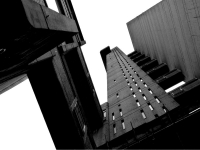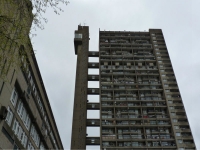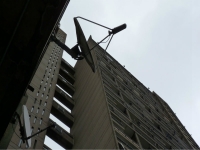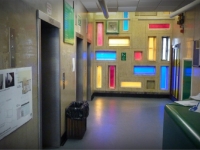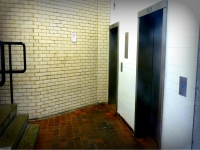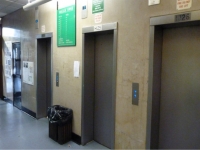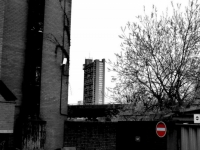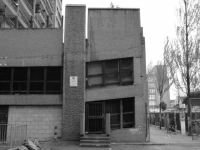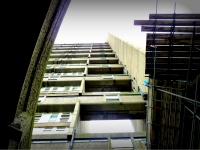Arts
CELEBRATING BRITAINS BRUTALIST ARCHITECTURE
Ernő Goldfinger
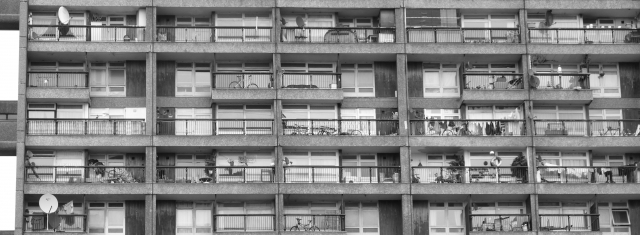
Trellick Tower by ErnÅ‘ Goldfinger (Source: © 2014 Daren Frankish)
USPA NEWS -
Trellick Tower is a 31-storey block of flats in North Kensington, Royal Borough of Kensington and Chelsea, London, England. It was designed in the Brutalist style by architect Ernő Goldfinger, after a commission from the GLC in 1966, and completed in 1972. It is a Grade II listed building.
Goldfinger's design is based on his earlier and slightly smaller Balfron Tower (in Poplar, east London), and is in effect a sibling building. It has a long, thin profile, with a separate lift and service tower linked at every third storey to the access corridors in the main building; flats above and below the corridor levels have internal stairs. The building contains 217 flats and was originally entirely owned by the GLC with the flats rented as council flats. Shortly after its completion the building was transferred to the local council (the Royal Borough of Kensington and Chelsea). Most of the flats are still social housing, but a significant minority are now privately owned.
The tower was completed at a time when high-rise tower blocks were going out of fashion as local authorities were beginning to realise the social problems they caused. By the late 1970s Trellick Tower had a reputation for crime including rape and the assault of a child, and anti-social behaviour, and many tenants resisted a transfer there. However, with the introduction of the 'right to buy' council homes, many of the flats were bought by the tenants.
The projection at the top of the services tower is the plant room. The majority of the plant is located at the top of the tower. The grouping together of the boiler and hot water storage tanks reduces the need for pumps and reduces the amount of pipework needed. Shorter pipe runs also reduce heat loss. The oil-fired boilers originally used became obsolete due to the 1973 oil crisis, the year after the tower opened. The flats now have electric heaters and the plant room although disused, still houses most of the now defunct plant. A planning application was made to convert it into a penthouse apartment but was refused by the local council.
In December 1989, four low power television relay transmitters with aerials were added to the existing communications equipment on the top of the lift tower. This was to solve reception problems for some residents of adjacent districts, including Notting Hill and Westbourne Grove. The transmitter installation is referred to by the BBC and Ofcom as "Kensal Town".
Source: Mixed Media
Buy eBook: http://store.blurb.co.uk/ebooks/p1a810954cee43b223d35
CLICK ON LINK BELOW TO VIEW YOUTUBE VIDEO !
Source: Mixed Media
Buy eBook: http://store.blurb.co.uk/ebooks/p1a810954cee43b223d35
CLICK ON LINK BELOW TO VIEW YOUTUBE VIDEO !
more information: https://www.youtube.com/watch?v=efHssUk2zq8
Liability for this article lies with the author, who also holds the copyright. Editorial content from USPA may be quoted on other websites as long as the quote comprises no more than 5% of the entire text, is marked as such and the source is named (via hyperlink).

